_________________________________________________
YOU TUBE - http://www.youtube.com/user/TravelsWithLobo
---------------------------------------------------------------------------------
Foray into the North-West Territories
Day 2 - June 22, 2007
Dawson Creek to Fort Nelson
Distance: 426 km
Length of Trip: 7 hours
The greatest thing about traveling is the dawning of a new day and the anticipation of new discoveries and experiences to come.
Dawson Creek was of special significance, for here is located the start of something big.
But first, there is the matter of breakfast.
I must confess that when I travel, I have a tendency to head to McDonald's for their breakfast menu. Item No. 1, an Egg McMuffin, hash browns and coffee, is my favourite. To compliment these delicious morsels, I also have a side order of pancakes.
McDonald's current slogan - "Ich liebe es" (the slogan originally came from Germany) - "I'm lovin' it" more or less summarizes my feelings at least about the breakfast. Yes, I am aware that this is a personal thing and most of you probably wouldn't even consider eating this for breakfast.
I feel somewhat guilty about my preference for the "No. 1" but I salve my conscience by mostly eating an ascetic breakfast of yogurt, berries and raw oatmeal when I am at home.
Another pleasure at McDonald's is the ample supply of newspapers to catch up on the latest news as one sips the morning coffee.
The first thing that I noticed here in Dawson Creek was the preponderance of newspapers like the Edmonton Journal and the Edmonton Sun. That was my first hint that the center of attention in this part of BC was not Vancouver but the closer Edmonton.
And so it was with interest that I immersed myself into the Edmonton papers to discover some hot button issues in this neighbouring province.
In an Edmonton Sun story, written by Neil Waugh, the headline "Trouble brews in the oilsands"(sic) caught my attention. The following were some of the points made in the article.
Twenty-five years of labour peace may come to an end on July 4 when five unions representing workers in the oil sands will be holding a strike vote. Shortly thereafter, this economic engine of Northern Alberta could be shut down. The main point of contention in the negotiations seems to be "quality of life issues" for workers who live in an isolated part of the province.
For anyone reading this outside of Canada, the Alberta oil sands, comprised of deposits of bitumen located in Northern Alberta, are second in their oil content only to the reserves of Saudi Arabia. Contrary to conventional oil, a high level of technology and investment is required to convert the bitumen into oil.
The oil sands royalty fee of a penny-on-the-dollar is put into question. Disappointment is expressed at Alberta Premier Ed Stelmach for his reluctance to take on Big Oil for a bigger share of the revenues.
A fatality report concerning two Chinese riggers that were crushed to death at the Horizon project (part of oil sands) seems to be very slow in coming.
There is a wave of lay offs in the conventional oil patch.
There is an impending show down with Alberta's teachers concerning up-coming labour negotiations.
The nurses' union is rejecting a proposed 15% pay hike over three years with additional perks and benefits.
Alberta's surplus this year is expected to be only $2.4 billion.
These issues remind one that Canada is a huge country with many local issues that basically go, for the most part, under the radar screen but which collectively add up to the economic well-being or detriment of this country.
However, it is time to put down The Edmonton Sun and hit the road. But firstly, let's not forget the free refill for the long drive to Fort Nelson.
My next stop was All-West Glass whose helpful employees provided me with another temporary solution to the shattered headlight lens. This one, also a plastic film, was a lot stronger than the Saran Wrap which lasted for only one day.
I started out by saying "Dawson Creek was of special significance for here is located the start of something big". This happens to be "Mile 0" of the Alaska Highway.
Of all the roads in North America, the Alaska Highway seems to elicit a degree of recognition and romanticism that is perhaps only paralleled by nostalgic Route 66 - The Main Street of America - which originally ran from Chicago to Los Angeles.
The Alaska Highway winds its way some 2,450 km from Dawson Creek, BC to Delta Junction, Alaska where it meets the Richardson Highway (160 km south of Fairbanks). Opened to traffic as an all-weather gravel road in 1947, it was originally constructed in 1942 by U.S. troops as a supply route for the military.
Very few travelers would turn down an opportunity to go to Alaska - the Last Frontier, even it if it might only be a trip to Hyder, Alaska as I did in EXCURSIONS Blog No.4.
The anticipation and excitement can be seen at the "Mile 0" marker, located at the junction of Highway 97 and the Alaska Highway, where it is an absolute ritual for anyone driving to Alaska and for most other travelers to stop and have one's photo taken a this historical spot. There is a buzz and excitement in the air which is reflected in the fact that perfect strangers are quite apt to converse with each other about the moment.
Another marker with flags is located right in downtown Dawson Creek (pop. 10,000) just diagonally across from the famous Alaska Hotel.
The hotel is a classic and not to be missed. I would have expected to see something like this in Dawson City, Yukon but not in Dawson Creek.
It was here that two motorcyclists with full baggage and gear caught my attention. Since there are many Europeans, or mostly Germans, who do this route on motorcycle, I was expecting a response with an accent.
If there was an accent, it was an American one and the two men from Sacramento, California riding two BMW R1150 GS motorcycles became quite a story in themselves.
Dell Fields and Doug Holck were on a mission to ride their motorcycles to the Arctic Circle, a trip of 9,000 km in 30 days.
The ride had a special purpose insofar as Dell Fields, a former Hewlett-Packard executive, has been battling cancer since 2002. It has been a tough and arduous turn of events in the rich and fulfilling life of this man of many talents.
As a life-long achiever, he was not content to let life expire without living it to the fullest and that includes the long-held goal of traveling above the Arctic Circle. Their proposed trip will take them up the Dempster Highway in the Yukon/North-West Territories to Inuvik as well as the Dalton Highway from Fairbanks to Prudhoe Bay, Alaska.
Other than fulfilling a long held dream, the purpose of the trip, billed as "Ride For Cancer Patient Awareness", is to demonstrate that cancer does not mean the end of one's goals as well as to raise awareness of cancer screening.
The trip was initially planned by Doug Holck and when his original partner dropped out, it presented an opportunity for Dell Fields that he could not turn down. Doug is a great PR man, very polished, sociable and a real complement to the "Ride For Cancer Patient Awareness".
The road is full of stories and interesting people. These two men, on a special mission, greatly touched my sensibilities about how an unfortunate situation can still be turned into something positive.
Best of luck to both of them on their extraordinary journey.
For further detail and support:
www.dellfields.com
After my encounter with Dell and Doug, it was high time to hit the Alaska Highway which to my surprise is now entirely paved and in Canada is funded by the federal government.
It is interesting to note that the road which is billed as the Alaska Highway has every "mile" marked off (not kilometers) which sometimes makes given distances confusing. Since a kilometer is five eighths of a mile, the difference is significant. I can't help but note a personal phenomena that to me, miles seem to last forever and distances in miles seem to go by a lot slower than distances in kilometers.
Just as an aside, the conversion in Canada to the metric system which took place in the seventies is still piecemeal. Distances are well engrained in kilometers; weights are so-so as very few people would express their weight in kilograms, yet we buy hamburger meat in kilograms; temperatures are more or less engrained in centigrade, but things like tire air pressure are never expressed in kilopascals and are still firmly entrenched in pounds per square inch.
Fifty-five kilometers after leaving Dawson Creek one plunges into the crater like, massive canyon of the Peace River. The Peace flows from Lake Athabasca, Alberta/Saskatchewan into Williston Lake in central Northern British Columbia.
The river gives its name to the whole region of Northern British Columbia around Fort St. John and Dawson Creek. It is simply referred to as "The Peace".
Crossing the bridge across the Peace River one passes the town of Taylor on the way to Fort St. John.
Between Taylor and Fort St. John one sees evidence of agriculture which is a sight rarely seen in Northern BC.
While driving this stretch of highway, I also heard on CBC Radio, a fascinating report about 88 year old Pete Friesen, the inventor of a special hydraulic jacking system which revolutionized the business of house moving. As I remember, his slogan became, "If it is man-made, we can move it!". He is best known for the incredible move of the Cape Hatteras Lighthouse. For more info: http://www.petethemovie.com/The_Man.htm
At the Tim Hortons in Fort St. John, I saw my first oil covered pick up truck which reminded me of the fact that this region of BC is known for its oil production.
Fort St. John is definitely a town which reflects its support role in the resourced based economy which surrounds its region. The pick up truck is king here and the Alaska Highway here is lined with businesses catering to the oil, gas, pipeline and transport industry which surround it. Labour shortages in the skilled trades are common here as the oil and gas sector are in a boom cycle.
One cannot drive through this region without noting the compressor stations and various sightings of pipelines along or near the road. For the neophyte it is difficult to know whether one is looking at an oil or gas pipeline.
At Mile 101, I stopped at the gas station in Wonowon. It is difficult to pass a gas station in these isolated parts without filling up. This gas station, apart from only selling regular gasoline, which is not entirely uncommon in the North, sets new standards for poor general lack of selection and unappetizing sandwiches.
An hour further into the trip, one comes across another river gorge which is so characteristic of the western river. In this case it is the Sikanni River and before descending into the river valley, a special lane is provided for trucks to exercise a brake check.
At historic mile 225 one passes a marker "Welcome to the Northern Rockies" which is a welcome sign as the landscape since Dawson Creek has been relatively flat. I am puzzled however since the rest of the trip to Fort Nelson continues to be "relatively flat". So where are these Northern Rockies?
No doubt however that I am in the north because, now for the first time, I am noticing stunted tree growth and yes, those are high mountains off to the far west.
Notwithstanding, this is big sky country and one of the fascinations is watching the impressive cumulus cloud formations which provide continuous entertainment throughout the drive with their various grand structures in the sky.
Services along the Alaska Highway are few and far between. It is essential to keep an eye on the gas gauge. Development is also haphazard and sporadic. For instance, I was puzzled by the relatively new Bed and Breakfast near Prophet River surrounded by a sea of mud that no one would dare penetrate to stay there. I know that the ATVs are extremely popular in this part of the world, but to get to a B and B?
I am now 799 km from Prince George and the next gas station is another 100 km. For the first time, I also notice that stepping out of the car to take a photo is becoming hazardous due to the mosquitoes.
After 452 miles I arrived at my destination of Fort Nelson.
The tourist office located on the eastern service road along the Alaska Highway is very helpful in answering my questions and in providing free internet access to check one's e-mail which is probably true of most tourist offices.
The economy is based on oil, lumber and gas. For the most part salaries in these domains are relatively high. There is little opportunity to spend money so the salaries seem to go into big trucks, houses and some cases, drugs. A recent referendum gave a down to the opening of a casino as it was seen as another social problem for the area.
As one drives these highways one is also struck by the isolation of many of the resource workers who live in either "open camps" where anyone can live or camps provided by the various companies.
I had to think for every one of us who drives a car and who turns up one's thermometer to make the house more comfortable, there has to be a natural resources worker, somewhere in the north, living in isolation and subject to the problems that are inherent therein.
The further north one travels in British Columbia, the more evidence one finds of our First Nations people. One forgets, they did live here long before the "white man" arrived and they are still thriving today in what was entirely their land.
The center of activity in town is the Fort Nelson Hotel but for food and entertainment there is also a western style saloon with good food in the campground just at the western end of town.
On its website: http://bccommunities.ca/fortnelson/index.php, Fort Nelson describes itself as having an economy based on natural resources, services and tourism. It also has one of North America's largest gas processing plants as well as one of BC's largest forest processing plants. It is also known for its fishing and hunting.
The evening I spent in Fort Nelson was highlighted by the Fort Nelson Hospital Foundation Bed Race Charity. It seemed to draw most of the town and provided a bit of fun and entertainment for the onlookers.
It was another long and interesting day. As I travel further and further north, the prospect of nightfall recedes more and more.
_________________________________________________
YOU TUBE - http://www.youtube.com/user/TravelsWithLobo
---------------------------------------------------------------------------------
Dawson Creek to Fort Nelson - Day 2
Saturday, June 23, 2007
 Fort Nelson, British Columbia, Canada
Fort Nelson, British Columbia, Canada
Other Entries
-
1Bear Alley - Highway 37 to Stewart/Hyder Alaska
Oct 04262 days prior Stewart BC, Canadaphoto_camera35videocam 0comment 2
Stewart BC, Canadaphoto_camera35videocam 0comment 2 -
2Stewart BC -- Historic Gateway to Alaska
Oct 05261 days prior Stewart BC, Canadaphoto_camera34videocam 0comment 2
Stewart BC, Canadaphoto_camera34videocam 0comment 2 -
3Stewart BC -- Ripley Creek Inn and the Estuary
Oct 05261 days prior Stewart BC, Canadaphoto_camera41videocam 0comment 0
Stewart BC, Canadaphoto_camera41videocam 0comment 0 -
4Hyder, Alaska -- Fish Creek and Salmon Glacier
Oct 12254 days prior Hyder, United Statesphoto_camera59videocam 0comment 3
Hyder, United Statesphoto_camera59videocam 0comment 3 -
5One of Nature's Great Stories
Oct 18248 days prior Adams River, Canadaphoto_camera63videocam 0comment 0
Adams River, Canadaphoto_camera63videocam 0comment 0 -
6Prince Rupert -- The New World Port
Jan 14160 days prior Prince Rupert, Canadaphoto_camera3videocam 0comment 0
Prince Rupert, Canadaphoto_camera3videocam 0comment 0 -
7Prince Rupert: Sinking of the Queen of the North
Apr 0381 days prior Prince Rupert, Canadaphoto_camera3videocam 0comment 0
Prince Rupert, Canadaphoto_camera3videocam 0comment 0 -
8On The Road Again - Northwest Territories
Jun 203 days prior Prince George, Canadaphoto_camera1videocam 0comment 0
Prince George, Canadaphoto_camera1videocam 0comment 0 -
9Prince George to Dawson Creek - DAY 1
Jun 212 days prior Dawson Creek, Canadaphoto_camera38videocam 0comment 0
Dawson Creek, Canadaphoto_camera38videocam 0comment 0 -
10Dawson Creek to Fort Nelson - Day 2
Jun 23 Fort Nelson, Canadaphoto_camera55videocam 0comment 0
Fort Nelson, Canadaphoto_camera55videocam 0comment 0 -
11The Liard Highway - Day 3
Jun 23later that day Fort Liard, Canadaphoto_camera73videocam 0comment 2
Fort Liard, Canadaphoto_camera73videocam 0comment 2 -
12Fort Simpson to Yellowknife - Day 4
Jun 241 day later Yellowknife, Canadaphoto_camera61videocam 0comment 0
Yellowknife, Canadaphoto_camera61videocam 0comment 0 -
13Yellowknife - The Old Town - Day 5
Jun 263 days later Yellowknife, Canadaphoto_camera41videocam 0comment 1
Yellowknife, Canadaphoto_camera41videocam 0comment 1 -
14Yellowknife - The New Town - Day 5
Jun 263 days later Yellowknife, Canadaphoto_camera41videocam 0comment 0
Yellowknife, Canadaphoto_camera41videocam 0comment 0 -
15Yellowknife - Frame Lake - Day 5
Jun 263 days later Yellowknife, Canadaphoto_camera53videocam 0comment 0
Yellowknife, Canadaphoto_camera53videocam 0comment 0 -
16Yellowknife - The Legislative Assembly
Aug 0442 days later Yellowknife, Canadaphoto_camera30videocam 0comment 1
Yellowknife, Canadaphoto_camera30videocam 0comment 1 -
17Yellowknife - Prince of Wales Northern Heritage Ct
Aug 0644 days later Yellowknife, Canadaphoto_camera22videocam 0comment 0
Yellowknife, Canadaphoto_camera22videocam 0comment 0 -
18On The Road Again - Discovery Coast
Aug 1250 days later Prince George, Canadaphoto_camera0videocam 0comment 0
Prince George, Canadaphoto_camera0videocam 0comment 0 -
19Discovery Coast Passage - Part 1 of 12
Aug 2058 days later Alexis Creek, Canadaphoto_camera55videocam 0comment 0
Alexis Creek, Canadaphoto_camera55videocam 0comment 0 -
20Discovery Passage - Part 2 of 12
Aug 2058 days later Tatla Lake, Canadaphoto_camera57videocam 0comment 2
Tatla Lake, Canadaphoto_camera57videocam 0comment 2 -
21Heckman Pass to Bella Coola - Part 3
Aug 2058 days later Tweedsmuir Provincial Park, Canadaphoto_camera62videocam 0comment 2
Tweedsmuir Provincial Park, Canadaphoto_camera62videocam 0comment 2 -
22Bella Coola - the Port - Part 4
Aug 2563 days later Bella Coola, Canadaphoto_camera26videocam 0comment 0
Bella Coola, Canadaphoto_camera26videocam 0comment 0 -
23The Discovery Coast Passage - Part 5
Aug 2765 days later Bella Coola, Canadaphoto_camera80videocam 0comment 3
Bella Coola, Canadaphoto_camera80videocam 0comment 3 -
24Port Hardy to Campbell River to Parksville
Aug 3068 days later Campbell River, Canadaphoto_camera2videocam 0comment 0
Campbell River, Canadaphoto_camera2videocam 0comment 0 -
25Cathedral Grove in MacMillan Provincial Park
Aug 3068 days later Coombs, Canadaphoto_camera4videocam 0comment 0
Coombs, Canadaphoto_camera4videocam 0comment 0 -
26Port Alberni - Gateway to the Pacific Rim - Part 8
Aug 3068 days later Port Alberni, Canadaphoto_camera2videocam 0comment 0
Port Alberni, Canadaphoto_camera2videocam 0comment 0 -
27Pacific Rim -- Tofino and Ucluelet - Part 9 of 11
Aug 3068 days later Tofino, Canadaphoto_camera13videocam 0comment 0
Tofino, Canadaphoto_camera13videocam 0comment 0 -
28Chemainus - Finding a Way to be Noticed - Part 10
Sep 0170 days later Chemainus, Canadaphoto_camera25videocam 0comment 0
Chemainus, Canadaphoto_camera25videocam 0comment 0

 Fort Nelson, British Columbia, Canada
Fort Nelson, British Columbia, Canada

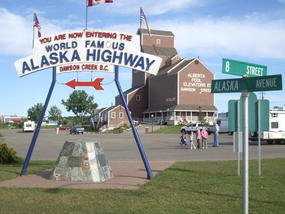
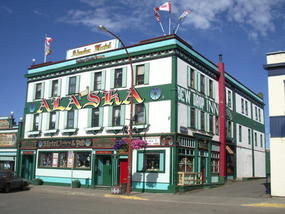
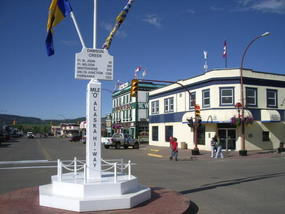
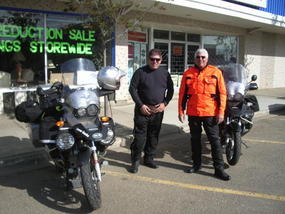
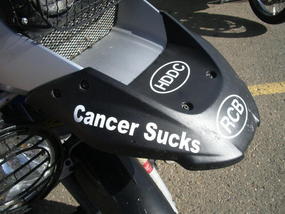
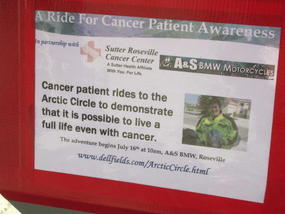
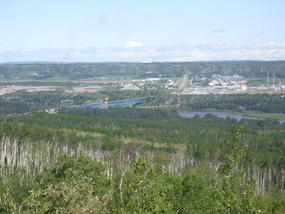
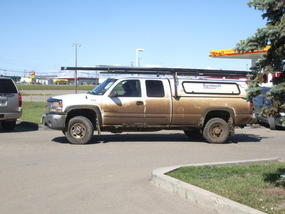

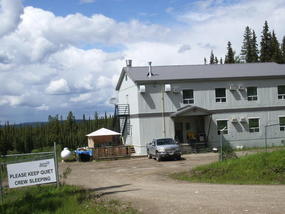
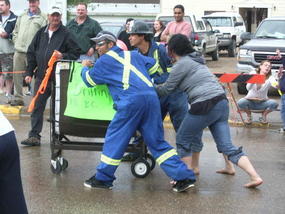


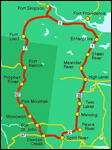
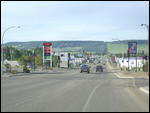
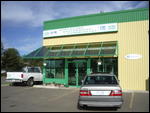
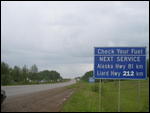
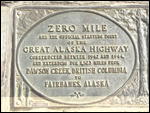
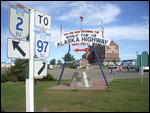
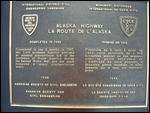
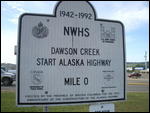
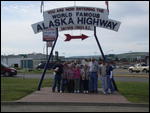
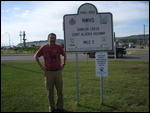

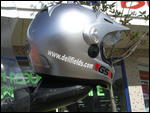
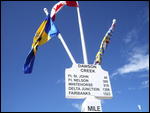
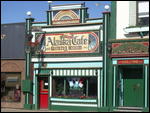
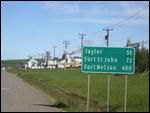
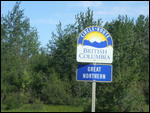
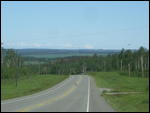
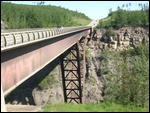
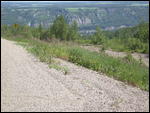

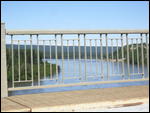

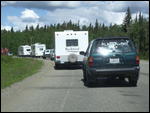

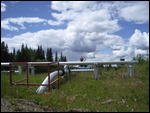
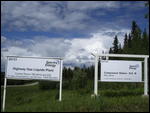


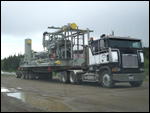
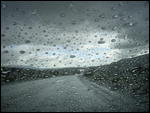
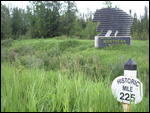
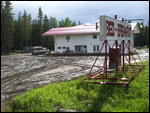
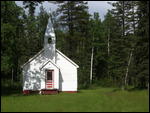
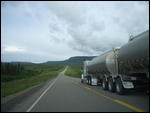
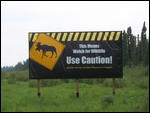
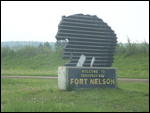
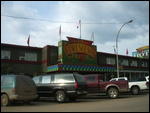
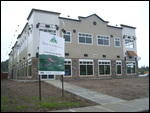

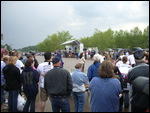
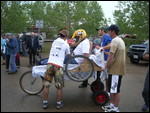
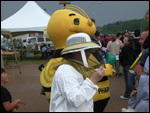
2025-05-22